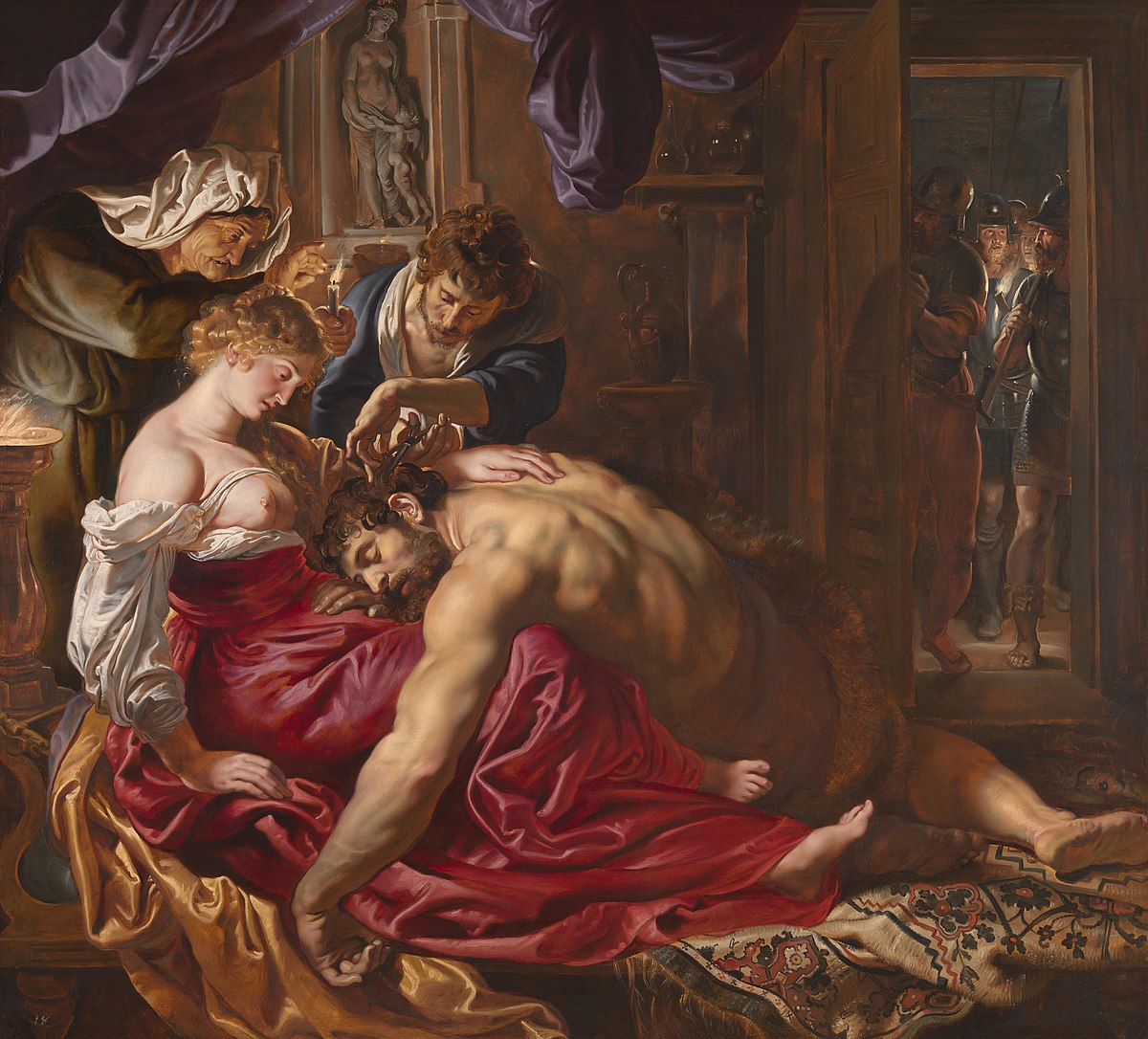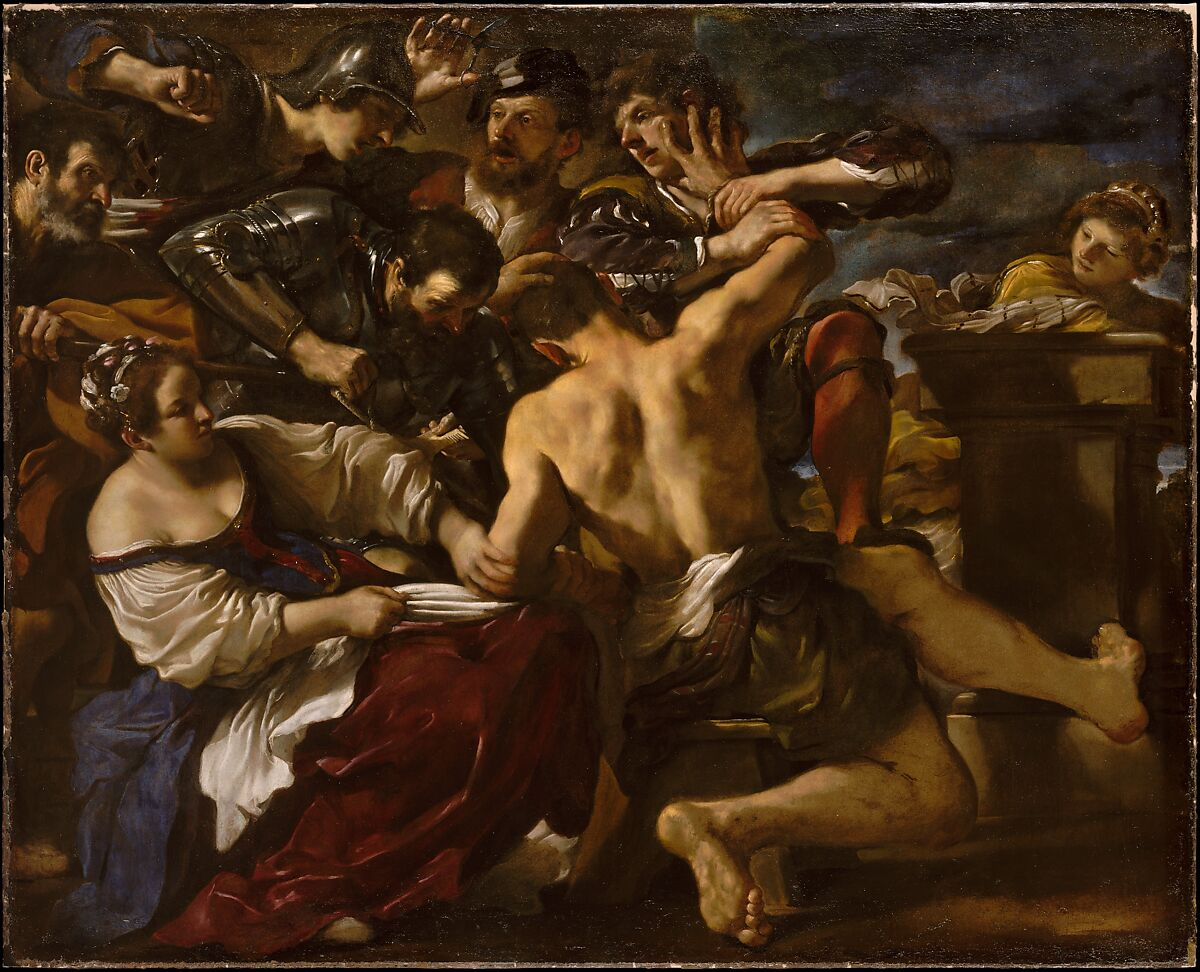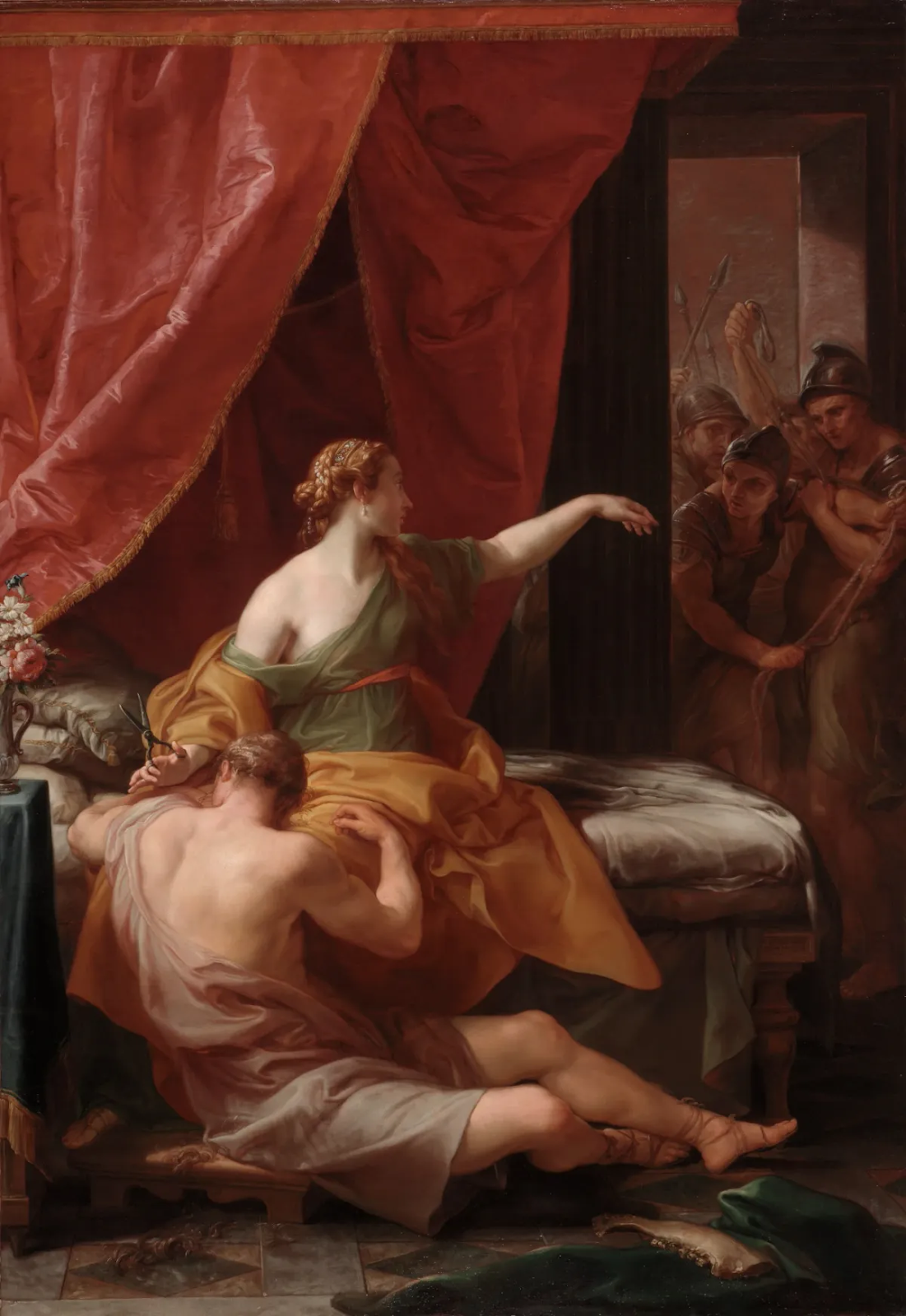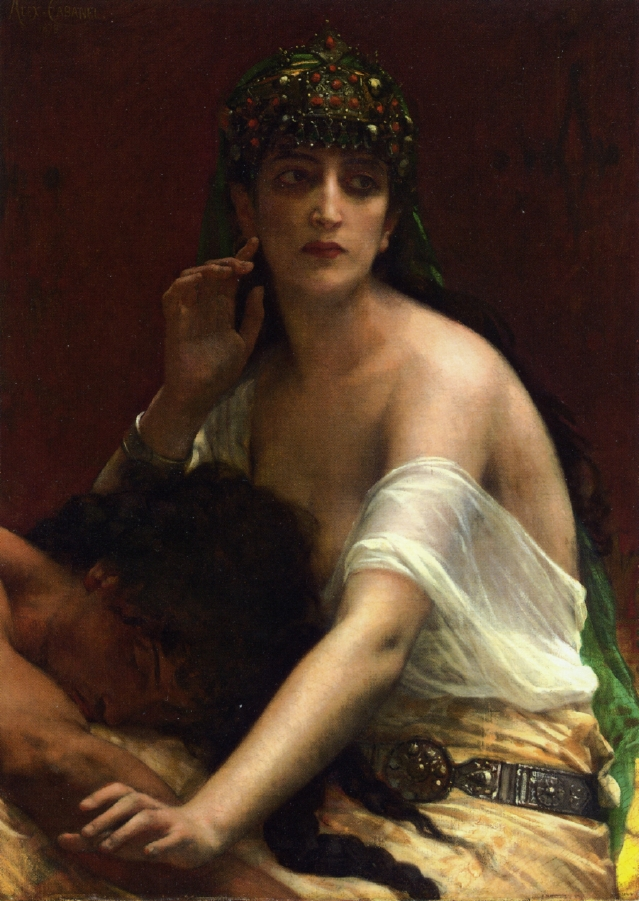Humanity Behind a Symbol
Condemnation or empowerment– which to choose? Should an artist delicately approach the narrative of an Old Testament traitor by taking the time to investigate the complexity of her circumstances? Or should he automatically put her story through the prism of his own time and promote accepted ideals in order to himself be accepted? Art history is full of examples of every sort of case. Fortunately, among them are those of many people who were courageous enough to be philosophers, and not just craftsmen trying to get by. They understood that sometimes the creation of a strong character on a canvas takes more than the gathering of commonly accepted notions. With consideration of the ideals of the past, possibility of future, very often an answer appeared in the reconciliation of the two. Such was the case for the creation of the image of the biblical temptress Delilah, who, depending on the period in history, took on a slightly different face. Yet, despite the differing aspirations of the artists, kept some of the traits that made her symbolically recognizable to an audience. Even as Samson’s side character, her betrayal of him left rich material for contemplation for anyone who came upon her story. To her belongs the questions of power, loyalty, morality, and sex. And in her many faces throughout the many ages, it might be both disturbing and comforting to find humanity. For no matter which agenda we use the story of Delilah for, she will remain as much as she ever was– human.
Object No.1:

Samson and Delilah
Lucas Cranach the Elder
Ca. 1528-1530
Medium: Oil on beech
Location: The Met, 1976.201.11
Lucas Cranach the Elder was a Northern Renaissance painter. It is visually evident that for this work, he took inspiration from various pieces of the 15th and 16th centuries that depicted Samson’s story. Some scholars have debated that Delilah’s cutting of Samson’s hair was not only a sexual betrayal, but a symbolic circumcision. Yet, her expression is peaceful and unrushed. The viridian of Samson’s garments compliments the red velvet of her contemporary Saxon dress. Her gold and red cap matches the bottom of her dress and highlights the paleness of her skin. She is soft and clean, while Samson is more rugged. Cranach shows him as a wild man tamed by a more civilized woman. Some scholars argue that this painting was part of a larger collection of paintings of Cranach that emphasized the Power of Women. This painting was likely commissioned for a town hall in Augsburg, with the intention to teach men to not give up their power to women.
Object No.2:

Samson and Delilah
Peter Paul Rubens
Ca. 1609-1610
Medium: Oil on wood
Location: The National Gallery, Main Collection, NG6461
Peter Paul Rubens was a Flemish artist who engaged some newfound techniques of his region to put the story in a setting reminiscent of a brothel. The statue of Venus and Cupid as well as the abundance of textiles forces one to the conclusion that Delilah is portrayed as a prostitute. The nudity of her shoulders and breasts in combination with the red dress later on became a template for many of Ruben’s sensual female characters. In this painting, she is what she seems even to the contemporary viewer: the sexual cause of Samson’s downfall.
Object No.3:

Samson Captured by the Philistines
Guercino (Giovanni Francesco Barbieri)
1619
Medium: Oil on canvas
Location: The Met, 1984.459.2
Unlike the previous depictions of Delilah, this one is very much openly hostile towards Samson. She engages her whole upper body in an attempt to restrain him. Her dress is still primarily red, and her breasts are still somewhat emphasized through their light value. However, her sexuality is no longer as much of the highlighted subject. This scene is about open struggle in a non-intimate setting. She is no longer betraying Samson quietly and softly. She is a character with her own desires, not disguised by allure.
Object No.4:

Samson and Delilah
Pompeo Girolamo Batoni
1766
Medium: Oil on canvas
Location: Detroit Institute of Arts, 2003.31
In this work, the presence of various rich fabrics is reclaimed. So is the domestic bedroom setting. Delilah’s hair matches the orange of her dress. She is still very much soft, but Samson is also not as rough. The whole scene is again more of a quiet betrayal. Delilah’s sexuality is implied by the setting and yet more concealed compared to Rubens's portrayal. Here, the imagery makes it possible to suggest that she may have been a victim of circumstances that forced her to betray Samson.
Object No.5:

Samson and Delilah
Carl Judvig Jessen
1882
Medium: Oil on canvas
Location: Sold at an Auction in 2019 (further information unknown)
Carl Judvig Jessen chooses to clothe Delilah in a white garment, giving Samson the symbolic red instead. The bedroom setting is yet again, and Delilah’s foreign origin is evident in her accessories. The cat in the corner juxtaposes the usual imagery of a dog representing fidelity. Delilah’s expression leaves no doubt of her evil intent and Samson’s face finalizes that understanding. Here, she is neither victor nor victim, she is a villain. Her betrayal is already in the making, but not yet consummated.
Object No.6:

Samson and Delilah
Alexandre Cabanel
1878
Medium:
Location: Private collection (location not disclosed to the public)
Alexandre Cabanel’s Delilah is unprecedented in the accent on her individuality. Not only are her accessories and clothes speaking of her origin, but so do her makeup and the tanner shade of her skin. Here, the usual presence of red is darker and behind her, not a part of her. Samson still has his hair, and Delilah is in contemplation. Perhaps she is thinking about her future betrayal or perhaps the motion of her hand already calls for the Philistines to grab the scissors. Either way, she is the subject, and not Samson. Her thoughts and feelings are what matters. Yet, she does not bear any evidence that would make it easy for the audience to judge her by. Her complexity makes her more human than ever before. Here, she is more than a symbol.
References:
J. Vanessa Lyon. 2020. Figuring Faith and Female Power in the Art of Rubens. Visual and Material Culture, 1300-1700. Amsterdam: Amsterdam University Press. https://search.ebscohost.com/login.aspx?direct=true&db=nlebk&AN=2521521&site=ehost-live&scope=site.
Lackowski, Mark. “Victim, Victor, or Villain? The Unfinalizability of Delilah.” Journal of the Bible and Its Reception 6, no. 2 (October 1, 2019): 197–225. https://doi.org/10.1515/jbr-2019-0005.

No comments:
Post a Comment